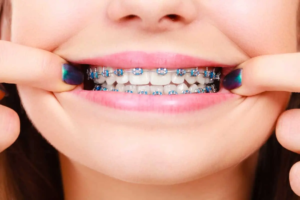
Orthodontic Treatment Phases
At South Bay Dentistry, we recognize the profound impact a beautiful smile can have on your self-assurance and overall well-being. Therefore we are proud to offer exceptional orthodontic treatments that focus on achieving straighter teeth and improving your bite.
Our team of experienced orthodontists in Gardena utilizes cutting-edge techniques and advanced technology to create personalized treatment plans tailored to your specific needs. Whether you require traditional braces, clear aligners, or other orthodontic appliances, our unwavering dedication to delivering remarkable results remains unwavering. With our expertise and commitment to providing exceptional patient care, South Bay Dentistry is your trusted partner in transforming your smile and enhancing your dental health. Take the first step towards a straighter, more confident smile by contacting us today.
Orthodontics treatments can be a two-phase or three-phase treatment, depending on how severe your bite issue is. It’s important to note that orthodontics treatments are highly predictable and enormously successful. After a thorough examination, your dentist will recommend what kind of treatment you’ll need. You might need a two or three-phase treatment, depending on how severe your bite problem is.
There are several benefits of correcting misaligned teeth.
Straight teeth are more aesthetically pleasing to look at and boost self-esteem. But more importantly, good dental alignment enhances the biting, chewing, and speaking functions.
There are several types of irregularities, including:
- Overbite – The upper teeth protrude further than or completely cover the lower teeth.
- Underbite – The lower teeth protrude further than the upper teeth causing the chin to look prominent.
- Crossbite – Some of the upper teeth may close inside the lower teeth rather than on the outside.
- Overcrowding – Insufficient room on the arch causes some adult teeth to erupt incorrectly and become rotated.
The Phases of Orthodontic Treatment
On average, orthodontics is a six to thirty-month process. The treatment time largely depends on the classification of the malocclusion, the type of dental device used to correct it, and the patient’s dedication.
Here is a general overview of the three major stages of treatment:
Phase 1 – The Planning Stage
An orthodontist will see a patient and diagnose the extent of the dental problem in order to start moving the teeth into the most efficient and expedient alignment. After examining several visits, some of these things may be completed:
- Medical and dental evaluations – There’s a very close connection between dental and physical problems. Problems in the mouth can lead to or be caused by medical issues. The goal of this evaluation is to make sure that prior medical and dental issues are completely under control before treatment begins.
- Study model (castings/bite impressions) – Dentists take impressions of the teeth to create a model of the patient’s mouth. Dentists will ask patients to bite down into a dental tray, which is filled with a modeling compound that hardens over the teeth. Subsequently, the tray is taken out of the mouth and filled with plaster, forming an impression or model of the teeth and jaw. These models provide orthodontists with a detailed study of each tooth’s position and its interrelation with neighboring teeth. Furthermore, they help determine the most efficient method for straightening the teeth.
- Panoramic X-rays – Are valuable tools for identifying potential complications or existing damage in the jaw joint. They provide a comprehensive view of the joint, revealing any damage or misalignment, as well as the precise positioning of each tooth and its corresponding root.
- Computer-generated images – Orthodontists use these images to create treatment plans and examine the effects specific treatments may have on the shape of the face, jaw, and other parts of the mouth
- Photographs – Some orthodontists use “before”, “during”, and “after” images to monitor how the treatment is going. These pictures are also helpful to document how treatment has affected the patient’s face and teeth shape.
Phase 2 – The Active Phase
The above diagnostic tools will be used to diagnose and develop a customized treatment plan for the patient.
Next, the orthodontist will recommend either a fixed or removable appliance orthodontic device(s) to gently move teeth into alignment. Some of these devices include a metal band, clear plastic, or ceramic brackets bonded to the tooth.
Most braces are fixed, which means that they stay in place after you have them put on. This is achieved through individual brackets, which are attached by an archwire. Lingual braces are also fixed; they fit on the inside (tongue side) of the teeth and are therefore less visible.
Removable devices are an alternative to fixed braces. Examples of removable devices include the Invisalign system, headgear, and facemask.
Whatever the orthodontic device, the orthodontist will regularly adjust it to ensure adequate and continual pressure is being applied to the teeth. It is essential to visit the orthodontist at the designated intervals and to call if part of the device breaks or becomes damaged.
Phase 3: The Retention Phase
If your teeth are in the right position, you’ll need to stop using braces and removable devices. The most difficult part of orthodontic treatment is now complete.
The orthodontist will next create a custom retainer. The goal of the retainer is to ensure that the teeth do not return to their original position. Retainers should be worn every day for a specified period in order to remodel the bone around the teeth. Once the bone has reformed, the teeth should be stabilized in their new position.
To book a consultation for orthodontic treatments, please contact our office.

